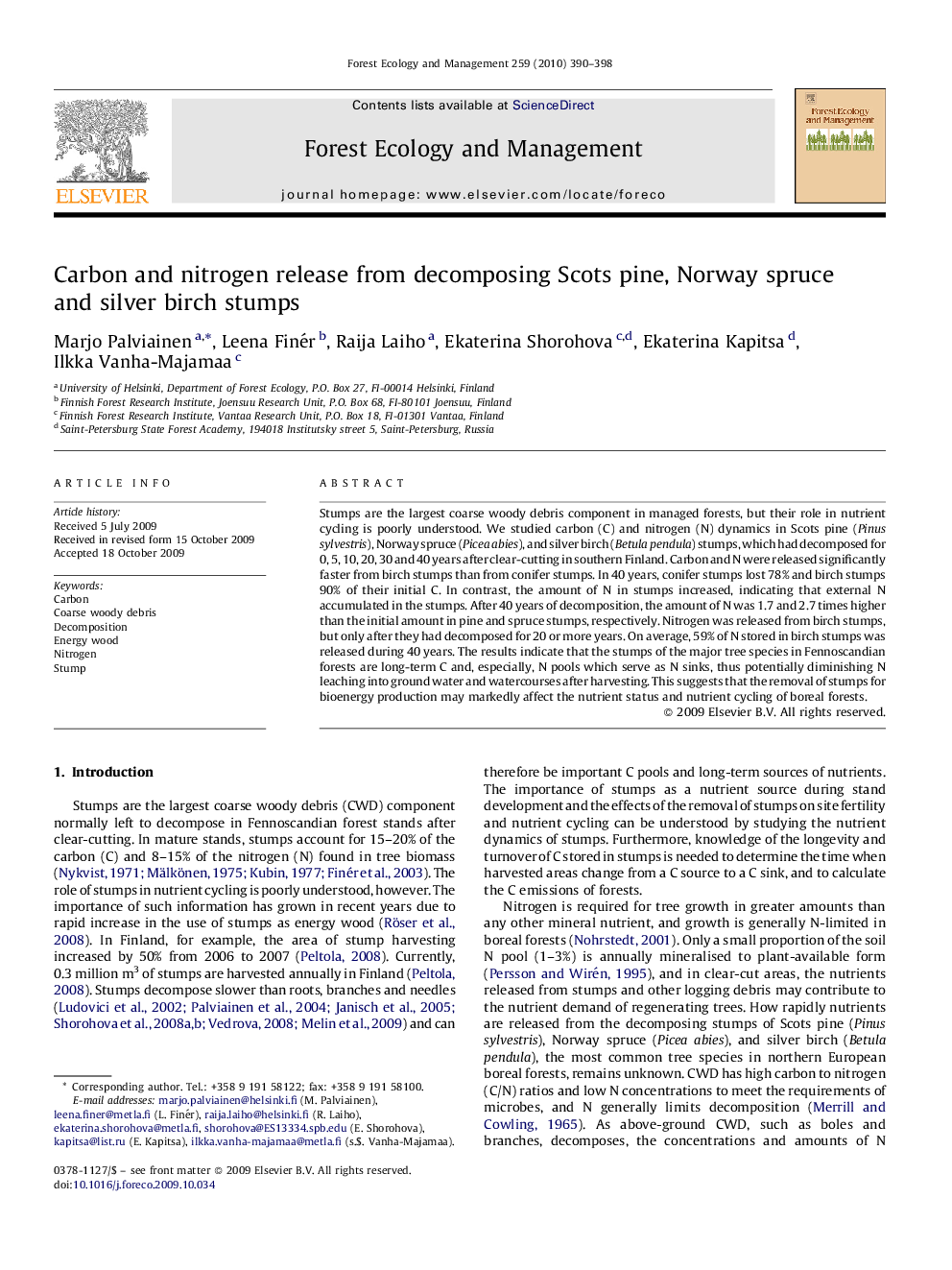| Article ID | Journal | Published Year | Pages | File Type |
|---|---|---|---|---|
| 10250569 | Forest Ecology and Management | 2010 | 9 Pages |
Abstract
Stumps are the largest coarse woody debris component in managed forests, but their role in nutrient cycling is poorly understood. We studied carbon (C) and nitrogen (N) dynamics in Scots pine (Pinus sylvestris), Norway spruce (Picea abies), and silver birch (Betula pendula) stumps, which had decomposed for 0, 5, 10, 20, 30 and 40 years after clear-cutting in southern Finland. Carbon and N were released significantly faster from birch stumps than from conifer stumps. In 40 years, conifer stumps lost 78% and birch stumps 90% of their initial C. In contrast, the amount of N in stumps increased, indicating that external N accumulated in the stumps. After 40 years of decomposition, the amount of N was 1.7 and 2.7 times higher than the initial amount in pine and spruce stumps, respectively. Nitrogen was released from birch stumps, but only after they had decomposed for 20 or more years. On average, 59% of N stored in birch stumps was released during 40 years. The results indicate that the stumps of the major tree species in Fennoscandian forests are long-term C and, especially, N pools which serve as N sinks, thus potentially diminishing N leaching into ground water and watercourses after harvesting. This suggests that the removal of stumps for bioenergy production may markedly affect the nutrient status and nutrient cycling of boreal forests.
Related Topics
Life Sciences
Agricultural and Biological Sciences
Ecology, Evolution, Behavior and Systematics
Authors
Marjo Palviainen, Leena Finér, Raija Laiho, Ekaterina Shorohova, Ekaterina Kapitsa, Ilkka Vanha-Majamaa,
